Overview
Are you preparing for competitive exams or looking to strengthen your knowledge of Haryana? This full Haryana GK 2025 guide has the Top 100 Haryana GK Questions with Answers. It covers all the important subjects, from history to culture. This post has everything you need, whether you want to find the best Haryana GK book, take a Haryana GK mock test, or download a Haryana GK PDF to study when you’re not online. Here, we look in more depth at Haryana’s important rivers, wildlife, freedom movement, festivals, economy, government, and well-known people. This updated list of Haryana GK questions is meant to help students, aspirants, and people who just want to learn more. It will help you prepare fully for future government exams and quizzes.
Q1. When was Haryana formed as a state?
A. Haryana was formed on 1st November 1966 from the former state of Punjab.
Q2. What is the area of Haryana?
A. Haryana covers an area of 44,212 square kilometers, making it the 21st largest state in India.
Q3. What is the capital of Haryana?
A. Chandigarh is the shared capital of Haryana and Punjab. It is a union territory with independent status.
Q4. What is the population of Haryana according to the 2011 Census?
A. The population of Haryana is 25.35 million (25.4 million) as per the 2011 Census.
Q5. What is the population density of Haryana?
A. The population density of Haryana stands at 573 persons per square kilometer.
Q6. What is the sex ratio in Haryana?
A. The sex ratio in Haryana is 879 females per 1000 males, which is below the national average.
Q7. How many districts does Haryana have?
A. Haryana has 22 districts as of 2025. The latest addition was Charkhi Dadri in 2016.
Q8. Which is the largest district of Haryana by area?
A. Sirsa is the largest district of Haryana, spanning around 4,277 square kilometers.
Q9. Which is the most populous city in Haryana?
A. Faridabad is the most populous city in Haryana, which is part of the National Capital Region.
Q10. Who was the first Chief Minister of Haryana?
A. Bhagwat Dayal Sharma was the first Chief Minister of Haryana, appointed on 1st November 1966.
Major Rivers
Haryana’s geography, business, and farming are all shaped by its rivers. This part of Haryana GK 2025 talks about the state’s important rivers, which have had an impact on the state’s culture and way of life for hundreds of years. Each river in the state has its own historical and natural importance. The sacred Yamuna River forms the eastern border of the state, and seasonal streams like Ghaggar, Markanda, and Tangri flow through it. Anyone studying Haryana GK questions for competitive tests needs to know about these rivers.
Q11. Which river forms the eastern boundary of Haryana?
A. The Yamuna River forms the eastern boundary of Haryana, flowing along the state’s eastern border.
Q12. What is the length of the Yamuna course through Haryana?
A. The Yamuna enters Haryana near Tajewala and flows through the districts of Yamuna Nagar, Karnal, Panipat, and Sonipat.
Q13. Name the main seasonal river of Haryana.
A. The Ghaggar River is the main seasonal river of Haryana.
Q14. Where does the Ghaggar River originate?
A. The Ghaggar River originates in the Shivalik Hills of Himachal Pradesh.
Q15. Which districts does the Ghaggar River flow through?
A. The Ghaggar flows through the districts of Panchkula, Ambala, Sirsa, and Fatehabad.
Q16. What is the course length of the Ghaggar River?
A. The Ghaggar runs a course of 290 miles before disappearing into the deserts of Rajasthan.
Q17. What is the historical significance of the Ghaggar River?
A. The Ghaggar-Hakra river system is believed to be associated with the Indus Valley Civilization.
Q18. Name the tributaries of the Ghaggar River.
A. The main tributaries of the Ghaggar are the Kaushalya River, Markanda, Sarsuti, Tangri, and Chautang.
Q19. What was the ancient name of the Saraswati River?
A. The ancient Saraswati River was thought to have flowed through Haryana but has now disappeared.
Q20. Which irrigation system uses the Yamuna water in Haryana?
A. The Western Yamuna Canal system provides irrigation support for agriculture in Haryana using Yamuna waters.
Wildlife & Environment
Haryana has a lot of different kinds of natural areas, including woods, wetlands, and protected areas that are home to many kinds of animals. From the bird-filled lakes of Sultanpur to the rough habitats of Kalesar, the state has a unique ecological balance where plants and animals can both live and grow. This part talks about significant environmental zones, threatened species, conservation efforts, and the general variety of life that makes up Haryana’s ecological identity. Knowing about these things not only helps you learn more about the state’s natural history, but it also makes people more aware of its ongoing efforts to protect the environment.
Q21. Name the national parks in Haryana.
A. Haryana has 2 national parks: Kalesar National Park and Sultanpur National Park.
Q22. Where is Kalesar National Park located?
A. Kalesar National Park is located on the Siwalik foothills and is bounded by the Yamuna River to the east.
Q23. What type of forest vegetation is found in Kalesar National Park?
A. Tropical moist deciduous forest is the vegetation type found in Kalesar National Park.
Q24. Name the major fauna found in Kalesar National Park.
A. Panthers, rusty-spotted cat, chital, goral, nilgai, porcupine, small Indian civet, and rhesus macaque are found in Kalesar National Park.
Q25. Where is Sultanpur National Park located?
A. Sultanpur National Park is located near Kurukshetra University in Kurukshetra district.
Q26. What are the major migratory birds found in Sultanpur National Park?
A. Siberian crane, greater flamingo, spot-billed pelican, and wood sandpiper are major migratory birds found in Sultanpur National Park.
Q27. In which wildlife sanctuary is the Vulture Conservation and Breeding Centre located?
A. The Vulture Conservation and Breeding Centre is located in Bir Shikargarh Wildlife Sanctuary, Panchkula.
Q28. Where are Morni Hills Wildlife Sanctuary located?
A. Morni Hills (Khol-Hi-Raitan) Wildlife Sanctuary is located in the Shivalik hills of Panchkula district.
Q29. How many wildlife sanctuaries does Haryana have?
A. Haryana has 8 wildlife sanctuaries including Saraswati, Bhindawas, and Khaparwas.
Q30. What is the state animal of Haryana?
A. The Black Buck (Indian Antelope) is the state animal of Haryana.
History
Haryana’s past is interesting because it goes from ancient civilizations to new developments in the present day. The area has been the site of important events, such as the epic battles of Kurukshetra and the rise of powerful kingdoms. It has also had a major impact on the politics of North India. Haryana’s character was shaped by the different dynasties, cultures, and economic and social changes that happened over time. This part gives a clear outline of the main historical periods, important rulers, and important events that have left a lasting impression on the state’s history.
Q31. What ancient civilization was associated with the region of Haryana?
A. The region of Haryana was associated with the Indus Valley Civilization.
Q32. Name the historical king who ruled from Thanesar.
A. Harshavardhan (607-647 CE) was the most illustrious king who reigned from Thanesar before shifting his kingdom to Kannauj.
Q33. When was the First Battle of Panipat fought?
A. The First Battle of Panipat was fought on 12th April 1526 between Ibrahim Lodi and Babur.
Q34. Who won the First Battle of Panipat?
A. Babur defeated Ibrahim Lodi in the First Battle of Panipat, marking the beginning of the Mughal Empire in India.
Q35. When was the Second Battle of Panipat fought?
A. The Second Battle of Panipat was fought in 1556.
Q36. Who fought the Second Battle of Panipat?
A. The Second Battle of Panipat was fought between Hemu and Akbar (with his regent Bairam Khan).
Q37. Who was Hemu?
A. Hemu was a Hindu minister in the court of Muhammad Adil Shah Sur and became king of Delhi briefly in 1556 after defeating Akbar’s army.
Q38. When was the Third Battle of Panipat fought?
A. The Third Battle of Panipat was fought on 13th January 1761.
Q39. Who fought the Third Battle of Panipat?
A. The Third Battle of Panipat was fought between the Maratha Empire under Sadashivrao Bhau and the Afghan Emperor Ahmad Shah Abdali.
Q40. Who was Harshavardhan?
A. Harshavardhan (607-647 CE) was an illustrious king of the Pushyabhuti dynasty who ruled from Thanesar and was known for cultural and administrative reforms.
Freedom Movement & Politics
Haryana was a very important part of India’s fight for freedom. It sent brave leaders, farmers, and soldiers to fight against colonial rule. People were motivated to be patriotic, and the area became a center for revolts, riots, and social awakening. Haryana’s politics changed quickly after it got its freedom, creating a system of government that focuses on growth and public welfare. This part talks about important freedom fighters, important political events, and how the state’s government and politics have changed over the years.
Q41. Who was Lala Lajpat Rai?
A. Lala Lajpat Rai, known as the “Lion of Punjab,” was a prominent freedom fighter and social reformer from Punjab (now Haryana region).
Q42. What was the “Lal-Bal-Pal” trio?
A. The “Lal-Bal-Pal” trio consisted of Lala Lajpat Rai, Bal Gangadhar Tilak, and Bipin Chandra Pal, who were leaders of the extremist wing of the Indian National Congress.
Q43. When did the Revolt of 1857 begin in Haryana?
A. The Revolt of 1857 was first sounded by Haryana’s people at Ambala on 10th May 1857, about nine hours before the outbreak at Meerut.
Q44. Name an important leader of the 1857 Revolt in Haryana.
A. Dhanu Singh in Faridabad, Rao Tula Ram in Ahirwal, and Nahar Singh in Ballabhgarh were important leaders of the 1857 Revolt in Haryana.
Q45. Who was Sir Chhotu Ram?
A. Sir Chhotu Ram (1881-1945) was a freedom fighter from Haryana who opposed the concept of Pakistan and worked for farmers’ rights.
Q46. When did the Haryana State reorganize from Punjab?
A. Haryana was formed on 1st November 1966 based on the Punjab Reorganisation Act, 1966.
Q47. On whose recommendation was Haryana State formed?
A. Haryana State was formed on the recommendation of the Sardar Hukam Singh Committee.
Q48. Who was Bansi Lal?
A. Bansi Lal (1927-2006) was a freedom fighter, senior Congress leader, and the architect of modern Haryana who served as Chief Minister four times.
Q49. At what age did Bansi Lal become the Chief Minister of Haryana?
A. Bansi Lal became the youngest Chief Minister of a state at the age of 41 in 1968.
Q50. Who is the current Chief Minister of Haryana as of 2025?
A. Nayab Singh Saini is the current Chief Minister of Haryana (from 12th March 2024 onwards).
Culture & Festivals
Haryana’s culture is a lively mix of old customs, folk art, and lively celebrations that show off the spirit of the people who live there. Every holiday adds a different beat to everyday life, from lively folk dances like Ghoomar and Khoria to bright fairs like Surajkund and Teej. The state’s culture is formed by its rural way of life, music, traditional crafts, and community events that keep old traditions alive. You will learn about the festivals, rituals, and cultural expressions that make Haryana a place with a rich history and lots of fun celebrations in this part.
Q51. What is the state sport of Haryana?
A. Wrestling is the state sport of Haryana.
Q52. When is the Teej festival celebrated in Haryana?
A. Teej is celebrated during the monsoon season, especially by married women in Haryana.
Q53. What is the significance of the Teej festival?
A. Teej is a festival where women dress in colorful attire, apply mehndi (henna), and participate in cultural events to pray for the well-being of their husbands.
Q54. When is Lohri celebrated?
A. Lohri is celebrated on 13th January every year, just before Makar Sankranti.
Q55. What is the significance of Lohri?
A. Lohri marks the end of winter and welcomes the season of fertility. People burn bonfires and throw sweets, puffed rice, and popcorn into the flames.
Q56. What is Diwali called in Haryana?
A. Diwali is known as the festival of lights and is celebrated with great fervor across Haryana.
Q57. How is Diwali celebrated in Haryana?
A. Diwali is celebrated by illuminating homes with diyas (earthen lamps), bursting firecrackers, exchanging sweets, and performing puja to seek blessings from Goddess Lakshmi.
Q58. Name a traditional folk dance of Haryana.
A. Dhamal is a traditional folk dance performed mainly by men and is full of energy, involving warriors’ spirit and valor.
Q59. What is the Loor Dance?
A. Loor Dance is a springtime folk dance performed by young girls, especially during Holi, full of elegance and playfulness.
Q60. What is Basant Panchami?
A. Basant Panchami symbolizes the beginning of a new season and is celebrated with kite flying and wearing yellow clothes.
Language, Literature & Symbols
Q61. What is the official language of Haryana?
A. Hindi is the official language of Haryana.
Q62. What is the state animal of Haryana?
A. The Black Buck (Indian Antelope) is the state animal of Haryana.
Q63. What is the state bird of Haryana?
A. The Black Francolin is the state bird of Haryana.
Q64. What is the state tree of Haryana?
A. The Peepal (Ficus religiosa) is the state tree of Haryana.
Q65. What is the state flower of Haryana?
A. The Lotus (Nelumbo nucifera) is the state flower of Haryana.
Q66. What does the Haryana State Emblem feature?
A. The state emblem of Haryana features a circular shield showcasing a lotus flower blooming out of water, with a rising sun in the background, supported by wheat ears, and the Lion Capital of Ashoka as the crest.
Q67. What does the Lotus flower symbolize?
A. The Lotus flower represents enlightenment and spiritual purity in many Asian religions.
Q68. What is the significance of the Peepal tree?
A. The Peepal tree is considered sacred in Hinduism, Buddhism, and Jainism, and is often planted near temples and religious sites.
Q69. What is the medicinal significance of the Peepal tree?
A. The Peepal tree’s bark, leaves, and fruit are used in traditional Ayurvedic medicine to treat various ailments.
Q70. When was Haryana established as a state?
A. Haryana was established as a state on 1st November 1966, carving it out from the former state of Punjab.
Economy, Industry & Resources
Q71. What is Haryana known as in terms of agriculture?
A. Haryana is known as the “Granary of India” or “Breadbasket of India” for its high agricultural output.
Q72. What are the main crops produced in Haryana?
A. The main crops produced in Haryana are wheat, rice, sugarcane, cotton, and oilseeds.
Q73. How does Haryana contribute to India’s agricultural exports?
A. Haryana contributes significantly to India’s agricultural exports, particularly in Basmati rice production.
Q74. Name the major industrial hub in Haryana.
A. Gurugram (Gurgaon) is the major industrial hub and is known as the “Millennium City.”
Q75. What is Gurugram’s role in India’s IT sector?
A. Gurugram has emerged as India’s second largest information technology hub, attracting multinational companies.
Q76. Name a major automobile manufacturer in Haryana.
A. Maruti Suzuki, India’s largest carmaker, has manufacturing facilities in Gurugram, Manesar, and Kharkhoda in Haryana.
Q77. What other major automobile company operates in Haryana?
A. Hero MotoCorp has large manufacturing plants in Haryana, boosting automotive exports.
Q78. What is Panipat known as in the textile industry?
A. Panipat is known as the “City of Weavers” and is famous for carpets, blankets, and textiles.
Q79. What percentage of Haryana’s income tax is collected from Faridabad and Gurugram?
A. About 50-56% of the income tax collected in Haryana comes from Faridabad and Gurugram.
Q80. How much textile waste does Panipat receive daily?
A. Panipat receives about 250 tons of textile waste every day, making it Asia’s largest textile and recycling hub.
Demography & Administration
Q81. What was Haryana’s literacy rate according to the 2011 Census?
A. Haryana’s literacy rate was 75.6% according to the 2011 Census, slightly higher than the national average of 74.04%.
Q82. What is the urban population percentage in Haryana?
A. According to the 2011 Census, 34.87% of Haryana’s population resides in urban areas.
Q83. What is the rural population percentage in Haryana?
A. According to the 2011 Census, 65.13% of Haryana’s population resides in rural areas.
Q84. How many members does the Haryana Vidhan Sabha (Legislative Assembly) have?
A. The Haryana Vidhan Sabha is unicameral, consisting of 90 members of the legislative assembly (MLAs) with a term of five years.
Q85. Which High Court has jurisdiction over Haryana?
A. The Punjab and Haryana High Court, located in Chandigarh, has jurisdiction over the entire state of Haryana.
Notable Personalities & Achievements
Q86. Who was Kapil Dev?
A. Kapil Dev (born 1959 in Chandigarh) was the captain of India’s first World Cup-winning cricket team in 1983 and is known as the “Haryana Hurricane.”
Q87. What is Kapil Dev’s cricket achievement?
A. Kapil Dev is the only cricketer to score over 5000 runs and take 400+ wickets in Test matches, making him one of the greatest all-rounders.
Q88. Who was Kalpana Chawla?
A. Kalpana Chawla (1962-2003) was born in Karnal, Haryana, and was the first Indian-origin woman astronaut to go to space.
Q89. How many space missions did Kalpana Chawla undertake?
A. Kalpana Chawla undertook two space missions aboard the Space Shuttle Columbia – STS-87 in 1997 and STS-107 in 2003.
Q90. Who was Neeraj Chopra?
A. Neeraj Chopra is an Olympic gold medalist in javelin throw from Haryana who won India’s first-ever Olympic gold in athletics at the Tokyo 2020 Olympics.
Q91. What is Neeraj Chopra’s Olympic achievement?
A. Neeraj Chopra won the gold medal in men’s javelin throw at the Tokyo 2020 Olympics with a throw of 87.58 meters.
Q92. Who is Sushil Kumar?
A. Sushil Kumar is a two-time Olympic medalist wrestler from Haryana (bronze in Beijing 2008 and silver in London 2012).
Q93. Who was Geeta Phogat?
A. Geeta Phogat was the first Indian woman wrestler to qualify for the Olympics and won India’s first-ever gold in women’s wrestling at the 2010 Commonwealth Games.
Q94. Who is Saina Nehwal?
A. Saina Nehwal is a renowned badminton player from Haryana and a Padma Shri awardee.
Q95. Who is Yuzvendra Chahal?
A. Yuzvendra Chahal (born 1990) is an Indian cricketer who plays for Haryana and is a leg break bowler, known for being the only person to represent India in both chess and cricket.
Miscellaneous & Fun Facts
Q96. What is the status of Chandigarh?
A. Chandigarh is a Union Territory serving as the shared capital of Punjab and Haryana, with independent administrative status.
Q97. Who designed Chandigarh?
A. Chandigarh was designed by renowned architect Le Corbusier, reflecting modern urban planning principles.
Q98. How many districts did Haryana have when it was formed in 1966?
A. Haryana was established with only 7 districts when it was formed on 1st November 1966.
Q99. What percentage of India’s passenger cars are produced in Haryana?
A. Haryana produces approximately 67% of India’s passenger cars.
Q100. What other products does Haryana produce at high volumes?
A. Haryana produces 60% of motorcycles, 50% of tractors, and 50% of refrigerators in India.
Conclusion
This comprehensive collection of the Top 100 Haryana GK Questions with Answers 2025 is designed to give learners, exam aspirants, and knowledge seekers a complete understanding of the state’s history, geography, culture, administration, and important facts. This guide is a good way to quickly review and get ready for the long term because it covers important topics like rivers, wildlife, politics, events, the economy, and famous people. These well-organized sections will help you build strong conceptual clarity and confidence, whether you’re studying for competitive tests or just interested in Haryana’s rich history.
FAQ.
1. What is included in the Haryana GK 2025 guide?
It includes 100 important questions with answers covering history, geography, culture, economy, politics, rivers, wildlife, symbols, and more.
2. Is this helpful for competitive exams?
Yes, the content is suitable for exams like HSSC, HPSC, CET, Police, Clerk, and various state-level recruitment tests.
3. Can beginners use this GK guide?
Absolutely. The questions are simple, structured, and easy to understand—perfect for beginners.

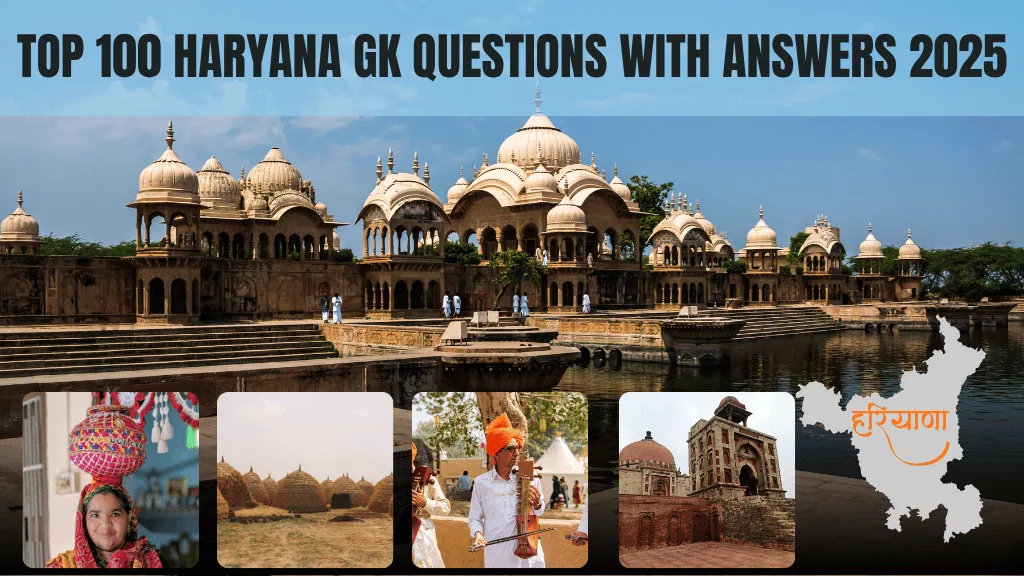










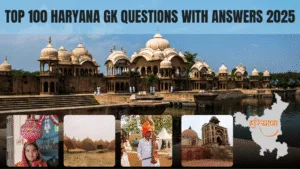
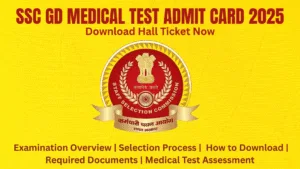


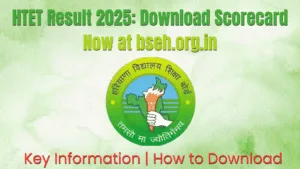





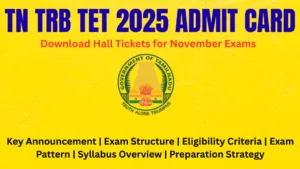
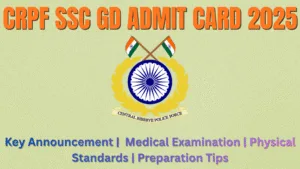





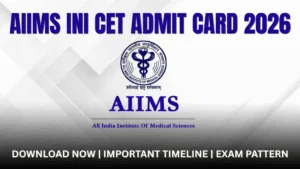
Leave a Comment